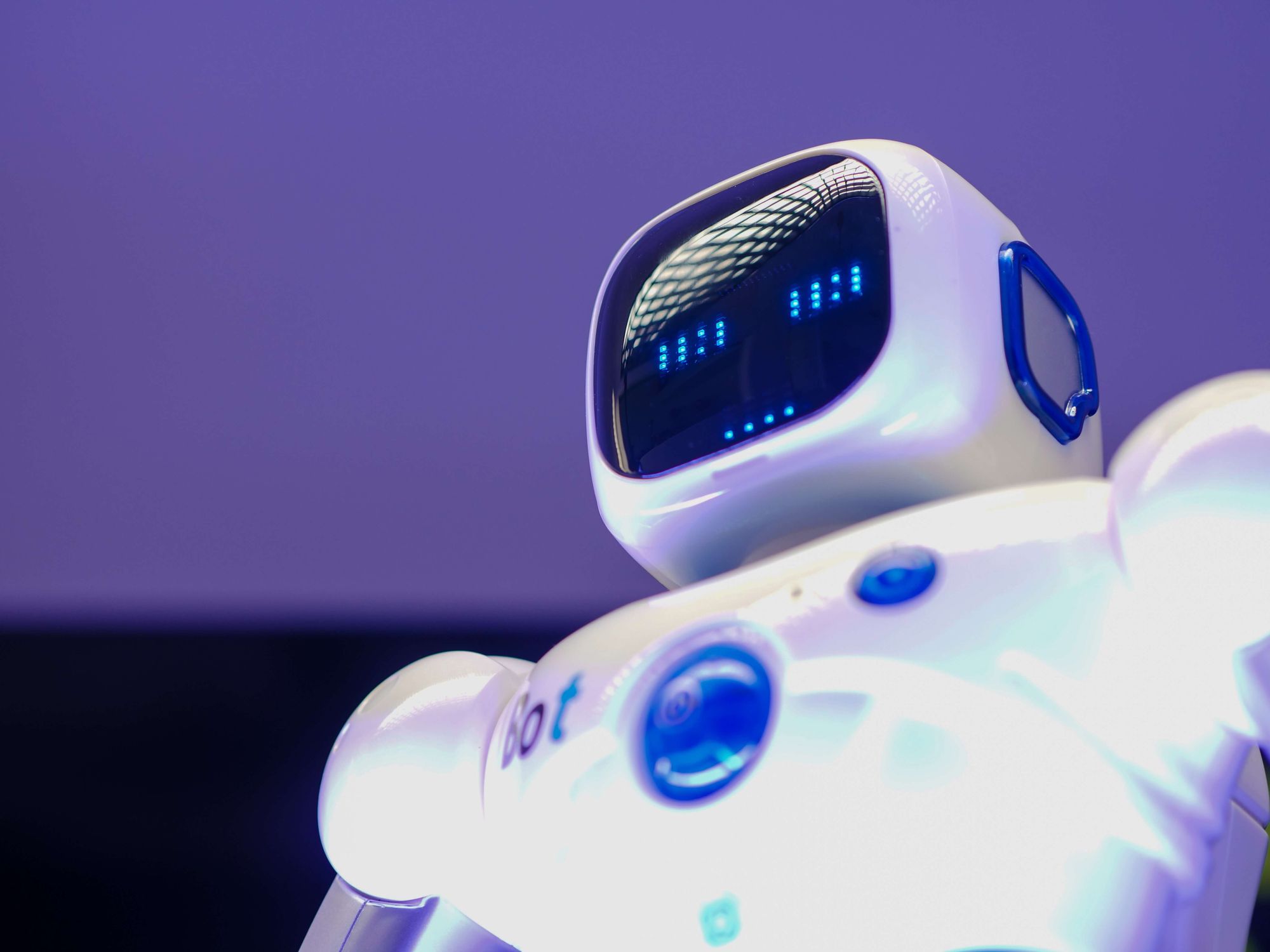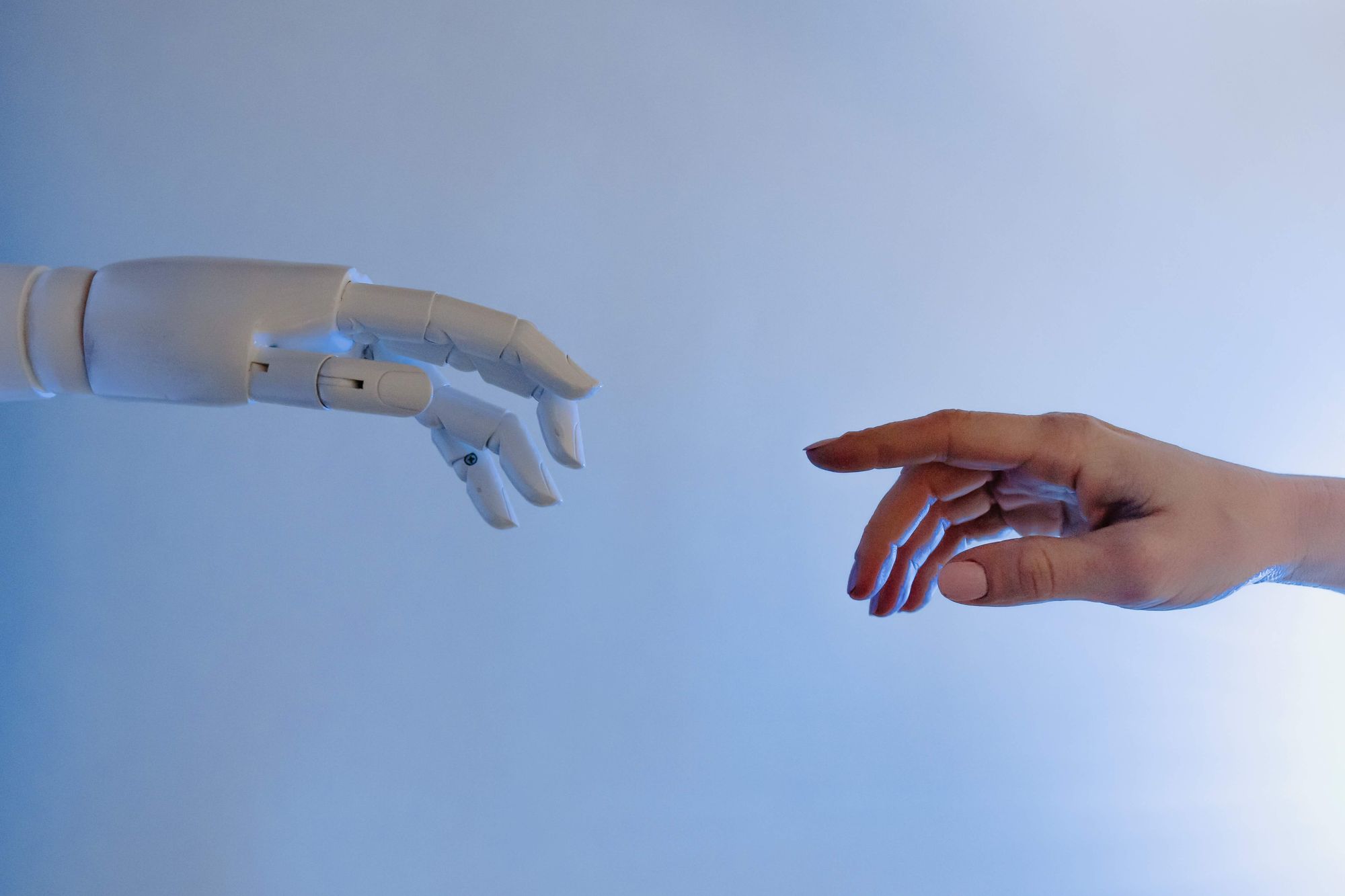Artificial intelligence is a topic on everyone's lips and is becoming increasingly important for our future.
Since its emergence, artificial intelligence has developed enormously, especially in recent times. The potential of AI is immense and it's currently a major topic in discussions about the future in many companies.
A classic example of AI that has already integrated itself into our everyday lives is voice recognition - Alexa or Siri have become the norm in many households.
Chatbots are also becoming increasingly popular on websites, increasing the efficiency of customer communication. Software is used that can access databases, linguistic knowledge, and full-text search engines, and can thus conduct an intelligent conversation with customers.

Artificial intelligence is revolutionizing the translation market
AI is also becoming increasingly important in the field of translation and is the most current type of machine translation. At first glance, it’s often not even noticeable that an AI is behind it. This is possible because a neural network can process huge amounts of data and thus link information together in a meaningful way.
With this, AI can imitate our thinking and learn from inputs. This is also known as Deep Learning, which allows an AI translator to teach itself how to translate best.
Already today, machines translate billions of words every day. A remarkable achievement that would be impossible for translators to accomplish.
Google Translator and DeepL are probably the best-known AI translators.
Best practice for AI translation
AI translation can be used wherever the quality of the text is not the most important factor. However, even though AI has continuously improved in recent years, it still can’t quite hold a candle to human translation.
AI translators can process huge amounts of data very quickly, technologies are always translated in the same way, and an AI does not make any escape errors. However, it also does not recognize cultural differences and does not know which idioms are used in a specific country, for example.
Also, an AI can't adapt the translations to a target group and can't necessarily transmit emotions. If you want to have a high-quality translation, it makes sense to have the text checked by a translator to give it the final touch. This way you can be sure that the text is translated correctly. However, you still save time and money with the combination as opposed to just working with a translator.

The human in the loop for marketing translation
The phrase “the human in the loop” certainly sounds familiar to fans of science fiction novels. In the context of artificial intelligence, the human in the loop acts like a teacher, because the AI needs instructions.
The principle works like in school. If the student makes a mistake, the teacher corrects it and the student learns from it. In this way, similar mistakes are avoided in the future. This is exactly how it works with artificial intelligence.
So what is the advantage of a human in the loop?
The right human already has a lot of experience and can recognize errors. The machine naturally translates much faster than a translator could and has access to large amounts of data. The combination of both optimizes the translations and gives the best possible result.
The translator does the fine-tuning and the AI gets a higher accuracy due to the human factor. The translator evaluates the output data and adjusts or corrects it. Through these interactions, the program continues to learn and evolve, making future translations more effective and speeding up the process.
Having a “human in the loop” contributes immensely to the improvement of Artificial Intelligence. The biggest problem in the development of AI systems is often the lack of training data. This is the point where humans can intervene, by feeding the algorithm with correct results based on natural intelligence.
This can compensate (to a limited extent) for the lack of data. Gradually, the system learns from this and adjusts the algorithms, contributing significantly to the quality of artificial intelligence.
What can and can’t AI do for marketing localization right now?
AI can be used well for things that are predictable and solve a particular problem. As soon as AI can access data sets, it works very efficiently.
For situations that aren’t predictable, however, it’s a different story. A good example is autonomous driving. Driving on the highway, keeping your distance, and changing lanes, all no problem for an AI. However, if you are in city traffic where every situation is different, the data sets fail. This is because the systems only know statistics.
Regardless, AI will become increasingly important in the coming years and decades.
Conclusion
But this is only a small sample of what’s possible with AI.
Especially in marketing, a lot will happen with AI in the near future because it can be used effectively with simple methods. AI is used to analyze existing customer data with the help of algorithms to find out what future customer behavior and buying patterns will look like. These predictions can then be used in a targeted manner, which not only saves costs but also generates more sales.
Ultimately, what are the advantages of AI in marketing?
Customer needs along the life cycle are better understood and marketing can be more targeted. This creates the opportunity for better and at the same time stronger customer loyalty. Buying behavior can be predicted and campaigns can be launched at the right time.
FAQs
Q: Can I use Chat-GPT for marketing translation and localization?
A: Absolutely, Chat-GPT can be a valuable asset for marketing translation and localization efforts. Given its advanced capabilities, it can swiftly process and translate large volumes of content, providing a solid foundation for your marketing materials to be adapted across diverse markets. However, it's crucial to acknowledge that while Chat-GPT's linguistic abilities are impressive, they are not infallible.
The tool excels at ensuring consistency and efficiency in translations, significantly reducing the time and resources required compared to traditional methods. Yet, it's important to remember that Chat-GPT, similar to other AI technologies, may not fully grasp the nuanced cultural intricacies and idiomatic expressions unique to each language and region. It cannot perfectly tailor content to resonate with specific target audiences or convey emotions with the same finesse as a human translator.
Therefore, incorporating Chat-GPT into your localization strategy should be viewed as a collaborative effort, where the AI provides a robust starting point, but human oversight plays a critical role in refining the output. A skilled translator or localization expert can evaluate the AI-generated content for cultural relevance, emotional impact, and appropriateness, making adjustments as needed to ensure the final product speaks effectively to your customers' language and cultural context.
By leveraging Chat-GPT in tandem with human expertise, you can achieve a balance between efficiency and quality. This approach not only ensures your marketing messages are accurately translated but also culturally adapted, ensuring they resonate deeply with your target audience. Ultimately, this strategy saves time and resources while maintaining the high standards necessary for effective global marketing.
Q: Will AI replace human translators?
A: As of now, the notion that AI could entirely replace human translators remains more speculative than imminent. AI's advancements have indeed revolutionized the field of translation, enabling the processing of vast data sets with unprecedented speed and consistency.
These developments have streamlined the initial stages of translation, especially for extensive and repetitive content, ensuring that technologies are uniformly translated without the common typographical errors a human might overlook. Nevertheless, AI's current limitations in understanding and interpreting the rich tapestry of human culture and language nuances cannot be overstated.
AI, in its current state, lacks the intrinsic ability to fully appreciate cultural contexts, idiomatic expressions unique to specific regions, and the subtle nuances that give language its depth and vibrancy. It falls short in tailoring content to resonate with specific target groups or in conveying emotions with the authenticity required to truly engage audiences on a deeper level.
These gaps highlight the irreplaceable value of human translators, whose expertise extends beyond mere words to encompass the cultural and emotional intelligence necessary for truly effective communication.
Therefore, while AI serves as a powerful tool for enhancing efficiency and consistency in translation, it does not herald the obsolescence of human translators. Instead, the most effective approach lies in a synergistic partnership between AI and human expertise. This collaboration allows for the leveraging of AI's strengths in handling bulk translations and initial drafts, followed by the critical, nuanced touch of human translators to ensure accuracy, cultural relevance, and emotional resonance.
In conclusion, human translators remain indispensable in the realm of high-quality, culturally sensitive, and emotionally impactful translations. The role of AI is not to replace but to augment and support the human skillset, creating a blend that maximizes efficiency without sacrificing the depth and authenticity that only human expertise can provide. This balanced integration ensures that your localization efforts meet the highest standards of excellence, enabling your brand to truly speak your customers' language.
Are you using AI to improve how you communicate with customers? The CMO Alliance Community wants to hear about it! Join the Slack channel today for free to be part of the conversation with a global network of CMOs and marketing leaders.




 Follow us on LinkedIn
Follow us on LinkedIn




